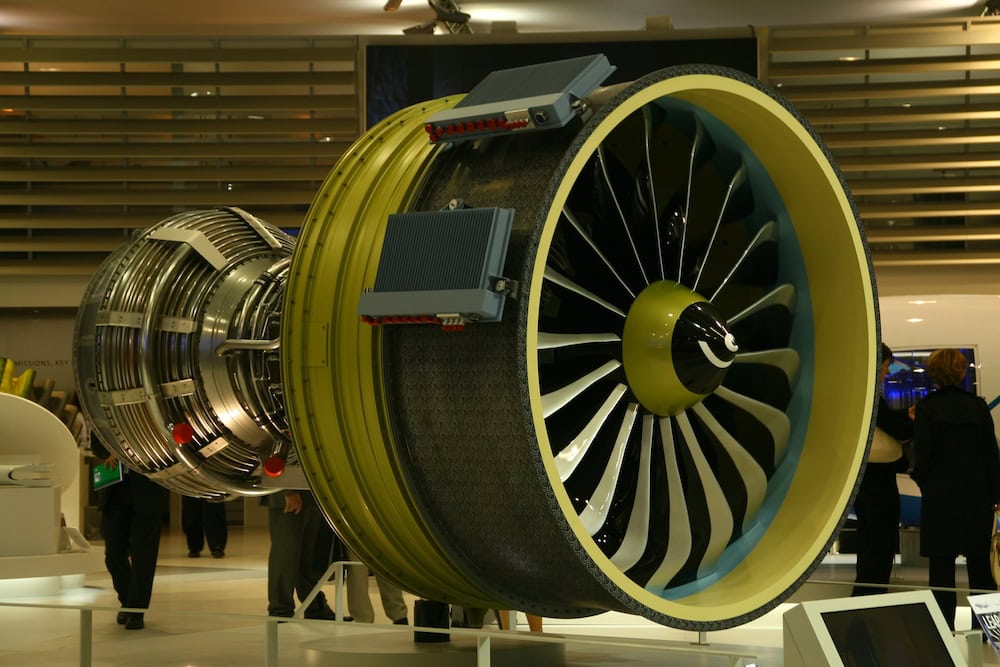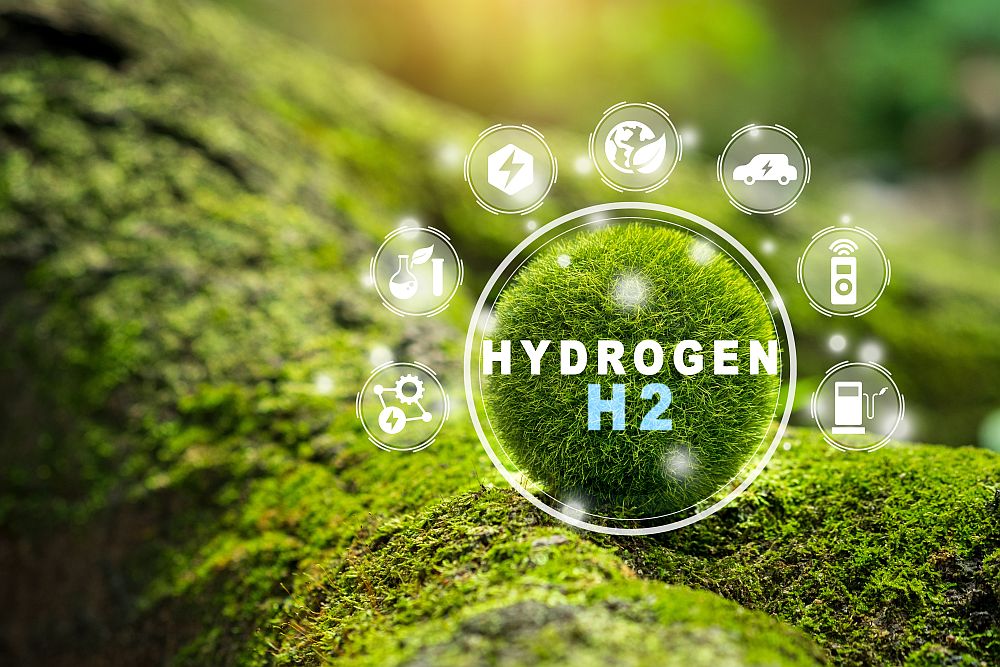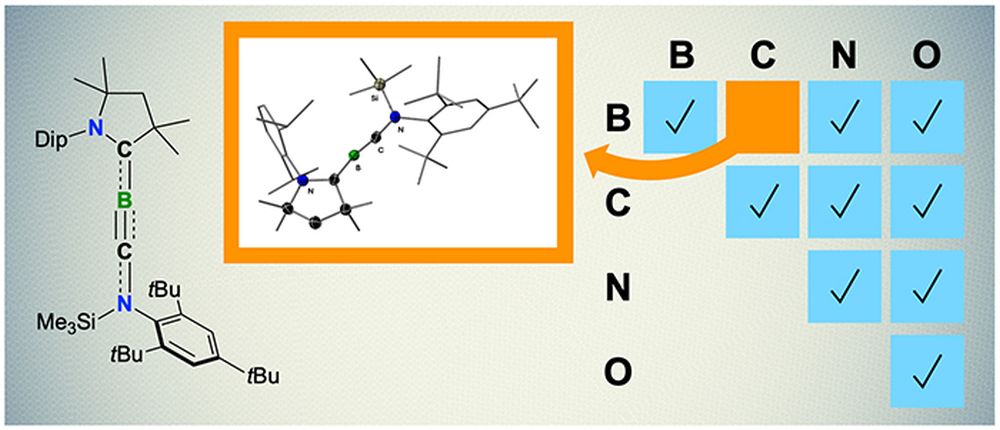
[Image above] A full-size mockup of CFM LEAP–X. The LEAP aircraft engine is the first widely deployed CMC-containing jet turbine. Credit: XY-AGP, Wikimedia (CC BY-SA 3.0)
When planning an exotic getaway, one of the largest expenses to factor into the budget is the cost of airplane tickets. And if you go on trips often, it is obvious the high fees do not go toward increasing seat width or legroom. What, then, does all that money fund?
According to airlines, one reason for hiking fares is to offset the increased operational costs of fuel. Fuel costs account for about 20 percent of operating expenses and over the past year the price of jet fuel went up around 50 percent. Currently, the ability to create a plane powered completely without fossil fuels is beyond our technology (on a large scale, that is,) and creating a hybrid-electric aircraft comes with significantly different challenges than creating a hybrid-electric car.
Are there other ways to engineer our way to using less fossil fuels? That is a question Gurpreet Singh of Kansas State University and his co-principal investigators also asked.
Gurpreet Singh, ACerS member, is the principal investigator for a National Science Foundation Partnerships for International Research and Education (PIRE) study on multicomponent silicon-based polymer-derived ceramic (PDC) fibers and ceramic matrix composites (CMCs). The team, which includes co-principal investigators Alexandra Navrotsky (ACerS Fellow, University of California, Davis), Himanshu Jain (ACerS Fellow, Lehigh University), Rishi Raj (ACerS Fellow and Distinguished Life Member, University of Colorado Boulder), and Peter Kroll (ACerS member, University of Texas at Arlington), received a five-year $4.7 million grant late last year to generate new fundamental knowledge on the structure-property-processing of polymer-derived ceramics (PDCs) and ceramic matrix composites (CMCs). The ultimate goal is to reduce costs and improve performance for high-temperature applications—particularly jet aircraft turbines.
The majority of today’s jet turbines are made from nickel-based alloys. However, typical service temperatures of turbines—up to 2,000°C (3,630°F)—exceed the alloys’ melting points, which range 1,200-1,315°C (2,190-2,400°F). To overcome this problem, aerospace engineers adopted two main innovations: use air that bypasses the combustion chamber to cool the turbine blades, and reduce thermal conductivity of the turbines by coating the surface of the blade with ceramics. Ceramics frequently have much higher melting points than metal alloys, meaning components coated in ceramics need less cooling than uncoated parts.
Ceramic matrix composites in particular have caught the eye of airplane manufacturers. CMCs can withstand temperatures 149-204°C (300-400°F) hotter than metal alloys’ limits, and they are one-third the weight of the metal alloys. In the 1990s and early 2000s, the U.S. Department of Energy ran a program through Oak Ridge National Laboratory to support industrial development of CMCs, and those efforts paid off in 2016 when CFM International began manufacturing LEAP, an aircraft engine that was the first widely deployed CMC-containing product.
The current PIRE study continues CMC research by leveraging support from national labs and foreign university partners. Already, in the first year, the PIRE program achieved several accomplishments, including: held the first NSF-PIRE-PDC workshop to promote face-to-face interactions among PIRE members and expand the scope of PDC fibers through research and education; organized a symposium on PDCs at the seventh International Congress on Ceramics in Brazil; and sent five undergraduate and two graduate students to PIRE partner institutions in Europe to be mentored by world renowned experts in the field of PDCs. According to the team, the global aspect of the project is key.
“Basic (and applied) research on next generation multi-component polymer-derived ceramic fibers at universities is conducted nearly entirely in Japan, Germany, France and Italy,” says Singh in an email. “The PIRE team is concerned that US university research is not keeping pace with fundamental research on non-oxide ceramic fibers elsewhere in the world … Therefore, it is important to encourage and increase student opportunities for learning abroad.”
Importantly, the PIRE team is aiming for the young researchers involved to comprise of approximately 50 percent female and underrepresented minority students, and the team is taking several approaches to ensure this goal. In email correspondence, Singh says he is working closely with the Dean of Retention, Diversity and Inclusion at Kansas State University to find female and underrepresented students, while Jain (at Lehigh) says he is reaching out to colleagues and specifically asking for students from underrepresented groups. According to Raj, recruitment of female students is happening without too much effort—Navrotsky notes that the chemistry undergrad and grad students at her university are close to 50 percent women—but minority enrollment is more difficult and requires deliberate initiatives.
During the second year of the grant, Singh says the team will continue work on molecular and rheological characterization of modified preceramic polymers and relate the rheological properties to the ability to draw fibers by hand in a lab setting.
“[The] biggest challenge would be to characterize the bulk chemical composition of the samples (especially hydrogen content) during the polymer to ceramic transformation stages,” Singh says. Another challenge, Navrotsky adds, is getting well characterized samples.
Jain says they hope to build on the groundwork laid at the first NSF-PIRE-PDC workshop during the second year as well. “To realize the synergistic impact of the program, a well-coordinated effort of the various members of PIRE is needed,” Jain says. “We started it at our last workshop and hope to strengthen it as we move forward.”
Based on the research to date, two scientific papers were published in Journal of Physics D: Applied Physics and Materials and deposited in the NSF Public Access Repository while a third scientific paper—published in the Journal of the American Ceramic Society—will be deposited in NSF–PAR. Singh was awarded a patent for his work titled “Aluminum-Modified Polysilazanes for Polymer-Derived Ceramic Nanocomposites.”
Author
Lisa McDonald
CTT Categories
- Aeronautics & Space
- Basic Science


